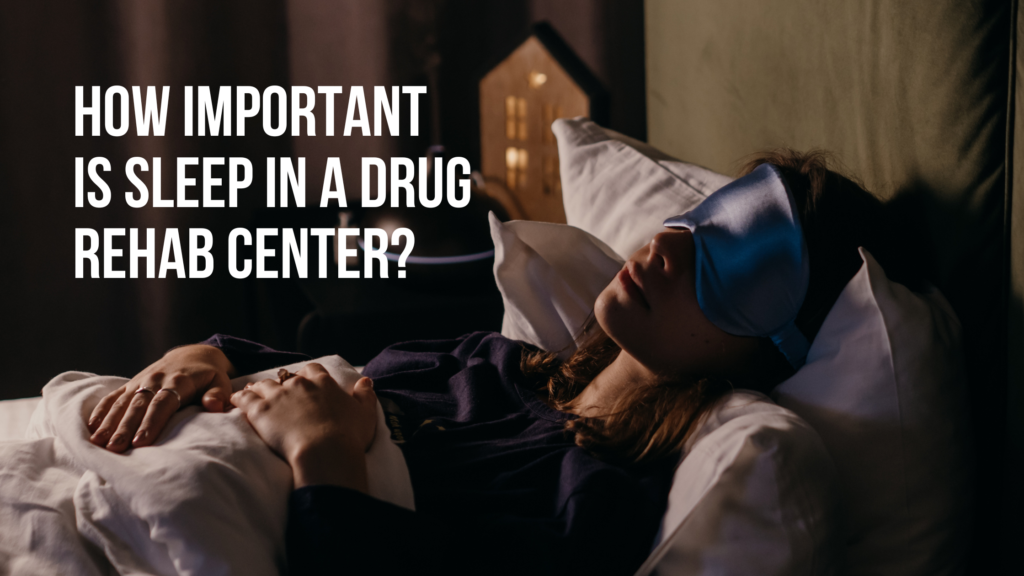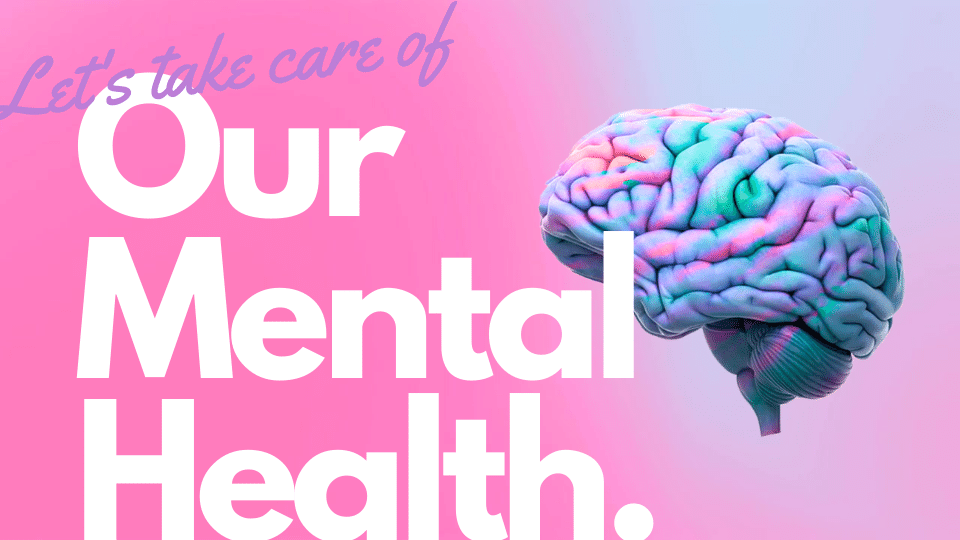Anxiety Disorders: Causes, Types, Symptoms, & Treatments

Introduction
Anxiety disorders are a common mental health condition characterized by persistent feelings of worry, fear, or uneasiness. They can significantly affect your daily life and overall well-being. People with anxiety disorders may experience symptoms such as:
- Excessive worry
- Restlessness
- Fatigue
- Difficulty concentrating
- Irritability
- Sleep problems
- Physical symptoms like sweating and rapid heartbeat
In this article, we will explore the causes, types, symptoms, and treatment options for anxiety disorders. Our goal is to provide you with a comprehensive understanding of anxiety disorders and how they can impact your life. By understanding the complexities of anxiety disorders, we hope to raise awareness and promote effective support for those dealing with these conditions.
Types of Anxiety Disorders
Anxiety disorders include various conditions, each with its own characteristics and symptoms. Knowing the different types of anxiety disorders is important for identifying and addressing specific mental health needs effectively.
1. Generalized Anxiety Disorder (GAD)
Generalized Anxiety Disorder (GAD) is when someone constantly worries about many life events or activities. People with GAD often struggle to control their worries, which can significantly affect their daily life. This ongoing state of fear goes beyond specific triggers and comes with physical symptoms like tense muscles, restlessness, and irritability.
Common Symptoms of GAD:
- Excessive worrying about everyday matters
- Restlessness and difficulty concentrating
- Muscle tension and physical discomfort
- Irritability and difficulty in controlling the worry
- Fatigue and sleep disturbances
Role of Excessive Worry in GAD Development:
Understanding the role of excessive worry in GAD development is crucial. Those with GAD experience high levels of anxiety because they’re always concerned about different parts of their lives. This constant state of worry can cause significant distress and problems, affecting their overall well-being.
By fully understanding GAD’s nature, its related symptoms, and the reasons behind its development, people can gain valuable knowledge about how it affects mental health. This understanding is necessary for increasing awareness, empathy, and effective ways to help those dealing with GAD.
2. Panic Disorder
Panic disorder is a type of anxiety disorder characterized by recurrent and unexpected panic attacks. While panic attacks can occur in individuals with other anxiety disorders, such as generalized anxiety disorder (GAD) or social anxiety disorder, panic disorder specifically revolves around the experience of these intense episodes.

Detailed explanation of Panic Disorder:
Panic disorder is a condition in which individuals experience recurring panic attacks, which are sudden and intense periods of fear or discomfort. These attacks typically reach their peak within minutes and are often accompanied by physical symptoms such as a rapid heart rate, sweating, trembling, shortness of breath, chest pain, nausea, and dizziness. Panic attacks can be so overwhelming that individuals may fear they are having a heart attack or going insane.
Common symptoms of Panic Disorder:
In addition to panic attacks themselves, individuals with panic disorder may also experience anticipatory anxiety. This is the fear of having future panic attacks or the worry about the implications and consequences of panic attacks. As a result, individuals may begin to avoid certain situations or places where they have previously had a panic attack or fear they might have one. This avoidance behavior can significantly impact daily functioning and lead to feelings of isolation.
The experience of panic attacks in individuals with this disorder:
Panic attacks can be distressing and debilitating for individuals with panic disorder. They can occur unexpectedly or be triggered by certain situations or stimuli. During a panic attack, individuals may feel an overwhelming sense of terror or impending doom. They may also experience physical sensations such as a racing heart, sweating, trembling, shortness of breath, chest pain, and a feeling of being detached from reality.
The intensity and frequency of panic attacks can vary from person to person. Some individuals may have infrequent episodes while others may experience them on a regular basis. The unpredictable nature of panic attacks can create significant distress and interfere with daily life.
Understanding panic disorder and its symptoms is crucial in order to seek appropriate help and treatment. If you or someone you know is experiencing panic attacks or symptoms of panic disorder, it is important to consult a healthcare professional for a comprehensive evaluation and guidance.
3. Social Anxiety Disorder
Social Anxiety Disorder, also known as social phobia, is when someone has an intense fear of social interactions and situations where they might be judged by others. People with this disorder often feel very anxious in everyday social situations, which makes them want to avoid those situations and can make their lives difficult.
Detailed Explanation of Social Anxiety Disorder
Social Anxiety Disorder is more than just feeling a little nervous or shy in social situations. It’s a constant and extreme fear of embarrassing yourself or being judged by others, which can make it hard to make friends, find a job, or do normal social things. This fear often makes people want to stay away from anything that might make them anxious.
Common Symptoms of Social Anxiety Disorder
- Feeling really scared of being judged
- Avoiding social situations
- Having physical symptoms like blushing, sweating, or shaking
- Finding it hard to talk or look at people
- Being really afraid of speaking or performing in front of others
Significance of Fear of Judgment or Embarrassment in Social Situations
The fear of being judged or embarrassed in social situations is a big part of Social Anxiety Disorder. People with this disorder often believe without reason that others are always thinking bad things about them, which makes them feel very self-conscious and even more anxious. This fear can be so bad that it stops them from doing things they want to do.
It’s important to know that Social Anxiety Disorder can be tough to deal with, but there are treatments that work and can help people feel better and get back to their normal lives.
4. What Are Specific Phobias?
Specific phobias are a common type of anxiety disorder that affects many individuals. Unlike other anxiety disorders like generalized anxiety disorder (GAD) or panic disorder, specific phobias are characterized by intense fear or anxiety related to a specific object or situation. This fear is often excessive and unreasonable, causing significant distress in daily life.
How Do Specific Phobias Manifest?
Specific phobias can manifest in various ways, with individuals experiencing extreme fear and avoidance behaviors towards specific triggers. These triggers can be anything from animals, such as spiders or snakes, to certain situations like flying or heights. The fear response is often immediate and intense, leading to a strong desire to avoid the feared trigger at all costs.
Examples of Common Phobias and Their Impact
Specific phobias can take many forms, but some common examples include:
- Arachnophobia: Fear of spiders
- Acrophobia: Fear of heights
- Claustrophobia: Fear of confined spaces
- Aerophobia: Fear of flying
- Emetophobia: Fear of vomiting
Here you can find list of all Phobias- https://en.wikipedia.org/wiki/List_of_phobias
These phobias can have a significant impact on individuals’ lives, affecting their ability to engage in everyday activities and causing distressing symptoms when faced with the feared trigger.
For example, someone with arachnophobia may avoid going outside during certain times of the year when spiders are more prevalent. They may experience intense anxiety or panic attacks when encountering a spider, even if it poses no real threat.

Understanding the Impact of Specific Phobias
The impact of specific phobias goes beyond mere avoidance behaviors. It can lead to social isolation, difficulty in developing relationships, and limitations in career opportunities due to the need to avoid triggering situations or objects. The fear associated with specific phobias is often irrational and disproportionate to the actual danger posed by the trigger.
Understanding specific phobias and their impact is crucial for both individuals experiencing these fears and those around them. It allows for empathy, support, and the development of effective treatment strategies to alleviate the distress caused by these anxiety disorders.
Causes, Symptoms, and Risk Factors of Anxiety Disorders
Anxiety disorders are complex conditions influenced by various factors, including genetics, brain chemistry, life experiences, and medical conditions. Understanding the multifactorial nature of their development is crucial in addressing and managing these mental health challenges.
Genetic and Environmental Interactions
- Genetic Predisposition: Genetic factors play a significant role in predisposing individuals to anxiety disorders. Studies have shown that these disorders often run in families, indicating a genetic component in their development. Additionally, gene-environment interactions can further contribute to the risk of developing an anxiety disorder. For example, individuals with a genetic predisposition may be more susceptible to the effects of environmental stressors, leading to the manifestation of anxiety symptoms.
Imbalances in Brain Chemicals
- Serotonin and GABA: Imbalances in neurotransmitters like serotonin and gamma-aminobutyric acid (GABA) can impact the regulation of anxiety. Serotonin is involved in mood regulation, and low levels of this neurotransmitter have been associated with increased anxiety. Similarly, GABA acts as an inhibitor in the brain and helps manage stress and anxiety. Disruptions in GABA function can lead to heightened anxiety responses.
Impact of Traumatic Life Events
- Childhood Adversity: Traumatic life events, particularly during childhood, can significantly influence the development of anxiety disorders. Adverse experiences such as abuse, neglect, or family disruptions can contribute to the formation of maladaptive coping mechanisms and heightened stress responses. These early-life experiences may shape individuals’ emotional regulation patterns, increasing their vulnerability to anxiety later in life.
Medical Conditions and Coexisting Symptoms
- Comorbidity: Certain medical conditions may coexist with or mimic symptoms of anxiety disorders. For instance, thyroid disorders, cardiac issues, and respiratory conditions can present symptoms that overlap with those of anxiety disorders. This underscores the importance of a comprehensive diagnostic evaluation to differentiate between primary anxiety disorders and symptoms arising from underlying medical conditions.
By considering the interplay of genetic, biological, environmental, and psychological factors in the development of anxiety disorders, healthcare professionals can adopt a holistic approach to diagnosis and treatment. Recognizing these diverse influences is essential for providing tailored interventions that address the unique needs of individuals grappling with these complex mental health challenges.
Prevalence and Impact of Anxiety Disorders
Anxiety disorders are a common mental health issue that has a big effect on individuals and society. Here’s some important information about how common anxiety disorders are and the impact they have:
1. Prevalence
According to the World Health Organization, 1 in 13 adults around the world experience an anxiety disorder in a year. This shows just how widespread anxiety disorders are and how many people they affect globally.
2. Impact in the US
In the United States, a large number of adults have anxiety disorders. It’s estimated that 40 million adults, which is about 18.1% of the population, have these conditions. This information comes from the National Institute of Mental Health and shows just how much of an impact anxiety disorders have in the country.
3. Gender Differences
It’s important to know that women are more likely than men to have anxiety disorders. In fact, they’re twice as likely. This difference between genders in how common anxiety disorders are helps us understand more about these conditions and how they affect different groups of people.
Understanding how common anxiety disorders are and the impact they have is very important. It helps raise awareness about these mental health challenges and allows us to come up with effective ways to deal with them.
Common Symptoms Experienced Across Anxiety Disorders
Anxiety disorders encompass a wide range of symptoms that can manifest in various ways across different individuals. While each specific anxiety disorder may have its unique set of manifestations, there are common symptoms that tend to be prevalent across the spectrum of anxiety disorders.
These shared symptoms include:
- Excessive Worry: Persistent and uncontrollable worry about various aspects of life, often involving irrational fears or concerns.
- Restlessness: Feeling on edge, unable to relax, and experiencing a sense of inner turmoil.
- Fatigue: Persistent feelings of exhaustion and low energy levels, even after adequate rest and sleep.
- Difficulty Concentrating: Struggles with maintaining focus and attention, leading to impaired performance in daily tasks.
- Irritability: Heightened irritability and easily becoming agitated in response to minor stressors or triggers.
- Muscle Tension: Physical tension, muscle aches, and soreness due to continuous stress and anxiety.
- Sleep Disturbances: Difficulties falling asleep, staying asleep, or experiencing restful sleep due to racing thoughts and heightened arousal.
It’s important to note that these symptoms are not exclusive to any single type of anxiety disorder. Instead, they represent a common thread that ties together the experiences of individuals grappling with different forms of anxiety.
Understanding these shared symptoms can help individuals recognize the potential presence of an underlying anxiety disorder and seek appropriate support and treatment.
“These symptoms are like pieces of a puzzle that can help reveal the larger picture of an anxiety disorder.”
Diagnosis and Treatment Approaches
When it comes to anxiety disorders, the diagnosis and treatment approaches are crucial in helping individuals manage their symptoms and improve their overall well-being. Here’s a comprehensive look at the diagnostic criteria and treatment options for anxiety disorders:
Diagnostic Criteria
Mental health professionals use a range of diagnostic tools and assessments to determine the presence of an anxiety disorder. These may include interviews, questionnaires, and observation of symptoms.
It’s important to highlight the significance of a comprehensive clinical assessment that considers both the symptoms experienced by the individual and the underlying causes of their anxiety.
Treatment Options
- Psychotherapy, particularly cognitive-behavioral therapy (CBT), is considered a mainstay in the treatment of anxiety disorders. CBT helps individuals identify and reframe negative thought patterns and behaviors that contribute to their anxiety.
- Medication, such as selective serotonin reuptake inhibitors (SSRIs), may be prescribed to help regulate neurotransmitters in the brain and alleviate symptoms of anxiety.
- In addition to traditional treatments, complementary approaches like lifestyle modifications, stress reduction techniques, and self-care strategies can also play a supportive role in managing anxiety symptoms.
By addressing both the diagnostic process and treatment modalities, individuals can receive comprehensive support tailored to their specific needs, ultimately empowering them to effectively manage their anxiety disorders.
Seeking Support for Recovery
Seeking support is a crucial step in the recovery process for individuals with anxiety disorders. Professional help from therapists or support groups can provide valuable guidance, validation, and coping resources. Here are some key points to consider:
1. Therapy
Engaging in therapy can be highly beneficial for individuals with anxiety disorders. Therapists who specialize in treating anxiety disorders can offer evidence-based techniques and strategies to help manage symptoms. Cognitive-behavioral therapy (CBT) is often recommended as it focuses on identifying and challenging negative thought patterns and behaviors associated with anxiety. Through CBT, individuals learn new coping skills and develop healthier ways of thinking.
2. Support Groups
Joining a support group can provide a safe and understanding environment for individuals with anxiety disorders. Connecting with others who have similar experiences can reduce feelings of isolation and provide a sense of community. Support groups offer opportunities to share personal stories, exchange coping strategies, and receive support from peers who truly understand the challenges of living with an anxiety disorder.
3. Online Resources
The internet provides a wealth of resources for individuals seeking support for anxiety disorders. Online forums, chat groups, and social media communities dedicated to anxiety disorders allow individuals to connect with others regardless of their geographical location. Websites and apps also offer self-help tools, guided meditation exercises, and educational materials that can complement traditional therapy or support group participation.
4. Self-Help Strategies
In addition to professional help, there are various self-help strategies that individuals can incorporate into their daily lives to manage anxiety symptoms. These may include:
- Mindfulness practices: Mindfulness involves paying attention to the present moment without judgment. Techniques such as deep breathing exercises, meditation, and body scans can help calm the mind and reduce anxiety.
- Regular exercise: Physical activity releases endorphins, which are natural mood boosters. Engaging in regular exercise can help reduce stress, improve sleep, and enhance overall well-being.
- Healthy lifestyle habits: Prioritizing sleep, maintaining a balanced diet, and reducing caffeine and alcohol intake can support better mental health and reduce anxiety symptoms.
- Stress management techniques: Learning stress reduction techniques such as time management, setting boundaries, and engaging in hobbies or activities that promote relaxation can help individuals better cope with anxiety triggers.
Remember, seeking support is not a sign of weakness but rather a proactive step towards managing anxiety disorders. It’s important to reach out to mental health professionals or support groups to find the right resources and strategies that work for you. Together, with the right support system in place, individuals with anxiety disorders can better navigate their journey towards recovery.

Living Well with Anxiety Disorders
Living with anxiety disorders can be challenging, but there are self-help strategies and coping mechanisms that can significantly improve your quality of life. Here are some practical tips to help you manage anxiety on a daily basis:
Self-Help Strategies for Anxiety Disorders
- Mindfulness Practices: Engaging in mindfulness meditation or yoga can help you stay grounded and reduce anxiety levels.
- Physical Activity: Regular exercise releases endorphins, which can boost your mood and alleviate symptoms of anxiety.
- Healthy Eating: Consuming a well-balanced diet and avoiding excessive caffeine or alcohol can positively impact your overall mental well-being.
- Quality Sleep: Prioritize a consistent sleep schedule and create a relaxing bedtime routine to promote better sleep and reduce anxiety.
Coping Mechanisms
- Deep Breathing Exercises: Practice deep breathing techniques to calm your mind during times of heightened anxiety.
- Journaling: Keeping a journal can provide an outlet for expressing your thoughts and emotions, helping you gain clarity and perspective on your feelings.
- Setting Boundaries: Learn to say no to additional commitments or responsibilities that may exacerbate your anxiety.
- Seeking Support: Build a strong support network of family, friends, or support groups who understand and validate your experiences.
These self-help strategies and coping mechanisms can empower you to take control of your anxiety and improve your overall well-being. Remember that it’s okay to seek professional help if you need additional support in managing your anxiety.
The Path to Recovery from Anxiety Disorders
Recovery from anxiety disorders is possible with appropriate treatment, support, and self-care. If you are struggling with anxiety symptoms, it is important to reach out for help. Here are some key points to keep in mind:
1. Seek professional help
Consult a mental health professional who specializes in anxiety disorders. They can provide an accurate diagnosis and develop a personalized treatment plan based on your specific needs.
2. Explore therapy options
Psychotherapy, particularly cognitive-behavioral therapy (CBT), has been proven effective in treating anxiety disorders. CBT helps individuals identify and challenge negative thought patterns and develop healthier coping mechanisms.
3. Consider medication
In some cases, medication may be prescribed to alleviate severe symptoms or when therapy alone is not sufficient. Selective serotonin reuptake inhibitors (SSRIs) and serotonin-norepinephrine reuptake inhibitors (SNRIs) are commonly used medications for anxiety disorders.
4. Practice self-care
Incorporate self-care strategies into your daily routine to manage anxiety. This can include engaging in regular exercise, practicing relaxation techniques such as deep breathing or mindfulness, ,meditation, getting sufficient sleep, and maintaining a healthy diet.
5. Build a support network
Surround yourself with understanding and supportive individuals who can provide emotional support during difficult times. Joining support groups or seeking guidance from online communities can also be beneficial.
By increasing awareness, understanding, and empathy towards anxiety disorders, we can work towards destigmatizing mental health challenges as a society. Remember that you are not alone in this journey, and there is hope for recovery. With the right resources and support, you can effectively manage your anxiety and lead a fulfilling life.
If you would like more information on anxiety disorders or need assistance finding resources, don’t hesitate to reach out to mental health professionals or organizations dedicated to supporting individuals with anxiety disorders.
Remember, recovery is possible. Take the first step towards a better future by seeking help and prioritizing your mental well-being.
Note: The information provided in this article is for educational purposes only and should not be considered a substitute for professional medical advice. Always consult with a qualified healthcare provider for diagnosis and treatment options.








